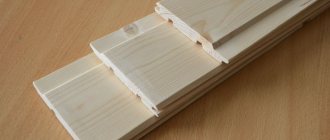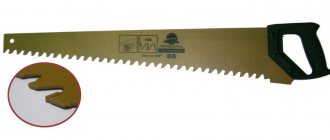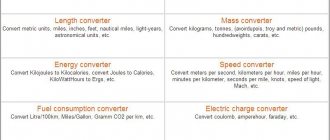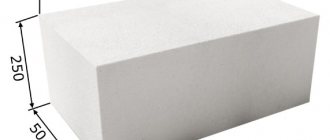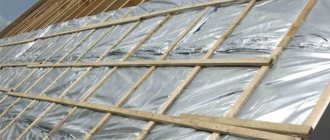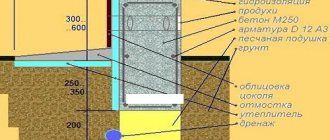Table of TV diagonals in inches and centimeters
To convert inches to centimeters and back when calculating the diagonal of a TV, use the following table of the most common TV screen sizes or use a calculator:
| In inches | In centimeters |
| 22″ | 55.88 cm. |
| 32″ | 81.28 cm. |
| 37″ | 93.98 cm. |
| 40″ | 101.60 cm. |
| 42″ | 106.68 cm. |
| 46″ | 116.84 cm. |
| 50″ | 127.00 cm. |
| 55″ | 139.70 cm. |
| 60″ | 152.40 cm. |
| 70″ | 177.80 cm |
The most popular TV diagonals
When selecting a TV, you need to be attentive to the manufacturer’s method of measuring the TV diagonal, since each manufacturer interprets the diagonal differently: for example, most manufacturers consider the TV diagonal to be the exclusively useful part of the screen. Some other manufacturers consider the TV diagonal to be the actual size of the body. If we are talking about a specific installation location for the TV with limited space, then it is better to clarify this detail before purchasing. The most popular TV diagonals in inches are 14, 20, 21, 25, 29, 32, 34, 36. In centimeters these will be 37, 51, 54, 63, 72, 81, 87 and 92, respectively. The width and height of popular TV diagonals can be viewed here:
If the user regularly transports or uses the gadget in various rooms inside his own home, then it is advisable to pay attention to the minimum diagonal dimensions of 14-21 inches for convenient transportation. Compact models often have a base antenna installed to receive the signal, so that the signal can be received no matter where it is installed.
How to correctly measure the diagonal of a TV
As mentioned earlier, the diagonal of a TV screen, and equipment in general, is measured in inches. When converted to centimeters, 1 inch equals 2.54 cm. In the English system of measures, 1 inch = 12 lines = 72 points = 1/12 foot = 1/36 yard.
Attention: if the TV is installed in a niche (furniture or plasterboard), then the actual diagonal size is especially important when choosing a particular model. In addition, the TV should not be placed close to the wall; the device needs constant air circulation from the rear.
Diagonal measurement
How to find out the diagonal of a TV? There are several ways. Often the box of equipment is thrown away and the instructions cannot be found, then you can choose one of the options presented:
- Find the TV device model on the Internet.
You will need to enter the name of the TV in the browser, and online stores or manufacturing companies indicate the diagonal in the technical specifications.
- Measure yourself.
How to measure the diagonal of a TV? For this process you need to arm yourself with: a tape measure, a meter (or a ruler), a sheet of paper and a pen. If you are not sure of the correctness of the calculations made in your head, it is better to take a calculator.
Let's look at a guide on how to measure the diagonal manually:
- From the corners of the screen, upper right to lower left, stretch a tape measure (meter). Please note that the device body is not taken into account. After that, we check the tightness of the tape measure along its entire length. If there is no tape measure, then you need to take a thread, pull it along the TV and cut or mark another corner. Then measure the length of the thread using a ruler.
- Take a pen and paper and indicate the measurements in cm.
- We carry out simple calculations. Accordingly, you will need to convert cm to inches. Divide the resulting measurements in cm by 1 inch (2.54). If it is difficult to divide into a column, use a calculator.
- When a meter is not enough to calculate the size of the device, you can use the second calculation option. You will need to measure the sides (width, height) separately.
- Now we need to carry out calculations using the Pythagorean theorem. We square the length and width, add them and take the square root of the resulting sum. To avoid mistakes, use a calculator. The result must be converted to inches (divide by 2.54).
- Another easy way to find out the diagonal of a TV is to carefully examine the TV case. Often it is not the display diagonal that is indicated, but simply the distance from the top to bottom frame of the screen. Therefore, when using this option, you need to be careful.
To ensure the accuracy of the information, it is best to look at the warranty card or technical passport of the device, if one has been preserved. On the cover of your passport you can often see how many inches there are on the TV.
What is the relationship between screen diagonal and TV size? We will answer this question further.
Which TV diagonal to choose
When choosing a specific TV diagonal, you will need to take into account the size of the room in which it will be placed. And here it’s not only about the interior, but also about the comfortable viewing distance. With current environmental standards, manufacturers are trying to minimize health harm from watching TV. Here is a table of recommended distances to a flat-screen TV depending on the diagonal:
It is quite rightly believed that the diagonal of a TV screen is the key to comfortable viewing of high-quality TV shows and films. Therefore, if you put high-quality content at the forefront, then the diagonal of the TV should be as large as possible, as far as the space of the room allows. If the user decides to watch movies in 3D format, then this will require at least a 49-inch TV.
However, consumer choice is often strongly influenced by the allocated budget. An important fact: a difference of a few inches may not have a big impact on the picture quality, but a TV may end up in a different price category due to a few conventional units. Sometimes a few inches can empty your wallet by several tens of thousands of rubles.
Self-control: how to draw the diagonal of the foundation
Method one
The very first option has been known since antiquity. We have a wall line and a point - the future corner of the house. From this point we postpone
perpendicular. Why do we remember the school geometry course: a2+b2=c2. Where a and b are the legs, and c is the hypotenuse. In order not to suffer with fractions and square roots, we take simple numbers that allow us to do without fractions: 3, 4 and 5. The first, second leg and hypotenuse, respectively. It does not matter which units of measurement are selected: meters, feet, elbows. The main thing is that the dimensions of the sides of the triangle are multiples of 3 4 and 5.
You can make a separate triangle with this aspect ratio, or put these dimensions on cords that indicate the boundaries of the future foundation (from the point of their intersection - from the corner) - these are the legs. And then expand the second wall until the distance between the outer points is equal to the hypotenuse. This will be a right triangle. Next, we continue the second leg to the required dimensions (the length of the future wall), and then we repeat the operation twice - the fourth corner will turn out on its own.
Method two
The method with arcs is somewhat simpler, although it requires a certain operational space.
There is a segment - the future wall. We continue this straight line further to the same distance. We get a line, the center of which is the future corner of the foundation. Then, two arcs are drawn from the extreme points (equidistant from the center-corner at a distance equal to the length of the wall) - their radius can be arbitrary, as long as it is greater than the length of the wall. That is, they take a rope, one end of which is attached with a loop to a post marking the edge of this doubled segment, and a stick is tied to the second end - it will play the role of a stylus, a line. And they draw an arc on the ground with this stick. The limiter is a rope or cord.
The procedure is repeated from the second extreme point. Accordingly, these two arcs intersect. From the point of intersection of the arcs, draw a straight line to the middle of our doubled segment - the corner of the future foundation. This is how the desired perpendicular is obtained.
It is important to remember that after laying out the foundation, everything is rechecked - for this, the diagonals of the resulting rectangle are measured. Their digital expression is not important. The main thing is that they are equal. Accordingly, if there are discrepancies along the diagonals (opposite sides are equal), then the angles are not right. Some corner needs to be moved a little to the side.
And it should also be noted that the method with arcs works well on small foundations: for a bathhouse or for a garage. It is better to carry out larger-scale markings for a house using either a triangle or a third method.
Third way
You will need a calculator here. First, tie the cord into a loop - the length of the loop is equal to the perimeter of the desired rectangle. Then the corner points are marked on the loop - that is, segments equal to the length of each wall are laid out. It is clear that this should be done consistently. Then, on the calculator, the length of the diagonal is calculated as accurately as possible - this is the hypotenuse, and the legs in the calculations are the walls - their length. Then measure out two pieces of cord, the length of which is slightly greater than the hypotenuse - the reserve is needed for knitting knots.
Marks are made on these two cords (a margin for tying is left on both sides. Then these cords are tied to a perimeter loop. So that they go from one corner to another diagonally. That is, through the corner.
Then the resulting “envelope” is stretched at the site of the future home. As soon as all the cords are equally stretched (there should be no sagging either outside or inside this web), then this will be a regular rectangle.
Making the markings for the foundation correctly
Which diagonal to choose for a 4K TV
4K TVs are gaining popularity due to the high pixel density on the screen. Thanks to this technology, image quality approaches natural values. This is understandable, because such a screen can accommodate more than 8.3 million pixels, which is a colossal amount compared to HD quality. Of course, image clarity is noticeably higher. As time goes on, 4K quality content will outnumber HD content. However, to watch high-quality 4K video, you will need a TV with the appropriate screen diagonal. In this case, the rule “the larger the diagonal, the better the image quality” applies most opportunely.
The problem is that 4K TVs at this stage are considered an expensive purchase and not everyone can afford it. It would seem that little-known TV manufacturers, or as they are also called: nonames, are ready to compromise and offer 4K TVs with a diagonal of 32-40 inches at a very affordable price. However, such a purchase, taking into account your own budget, will not bring the desired viewing emotions, since a 4K TV with a diagonal of more than 50 inches can provide comfortable viewing. Ideally, choose a 4K TV with at least a 65-inch diagonal. Otherwise, the difference compared to Full HD will not bring a noticeable effect, and the overpayment will make you think about the feasibility of the purchase.
Speaking of picture quality on mid-diagonal TVs. Online, many users with small (by 4K standards) TVs have repeatedly noted that the image quality is particularly unpleasant at a distance of at least 5 meters. However, you shouldn’t give up on such a purchase: after all, what is appropriate in the kitchen will not be entirely appropriate in the living room or bedroom. It is necessary to select a TV according to the formula of the TV diagonal in ideal combination with the distance to the screen.
Diagonal calculation
If you have both diagonals of equal length, congratulations, the main part of the marking has been completed and you can begin marking the internal walls. But, unfortunately, in most cases when measuring diagonals, there are minor discrepancies. There may be several reasons - the plot is not quite rectangular, tall grass interfering with measurements, and, in general, the human factor.
In addition, as a result of chipping, reinforcing bars may be exposed, which is extremely undesirable. The zero level is marked in the same way as during the initial pouring of concrete into the formwork.
The only difference is the adjusted base height. A strong cord is driven into the prepared slots, after which it is pulled tightly between the control points.
This will become a kind of long-length beacon and will allow you to abandon other marks. The disadvantage of this method is a certain mobility of the cord relative to the horizon. Beacons made of timber do not have such a disadvantage. In places where the foundation is skewed in height by more than 50 mm, it is recommended to lay reinforcing mesh. It should have a thinner consistency compared to the concrete mixture that was used previously.
The curvature of the lines of the foundation of the house can take various forms. Some of them can be fixed, others are more difficult. There are also those that cannot be corrected. For example, if the foundation is not only crooked, but has sufficient strength.
Preparing to mark the foundation
Low strength is the largest foundation defect. If, after removing the formwork, large cavities are discovered, if, when hit with a sledgehammer, it crumbles, bursts, or pieces of concrete fall off, then no house, even a light one, can be built on such a foundation.
It will crumble in the near future.
General rules for marking a foundation Construction of a rectangular foundation by T. Pythagoras Construction of a rectangular foundation using the cobweb method Marking for a columnar foundation Marking for a strip foundation Marking for a slab foundation. Select a starting point. The first side of our foundation needs to be tied to some object on our site.
Such a foundation is usually demolished. In such cases, they consult with experienced craftsmen or hire skilled workers and lay a new foundation for the future structure. Sample of a crooked foundation. Inward curvature is not critical.
How to determine the distance to the TV depending on the diagonal
Until relatively recently, when apartments had CRT television receivers, a certain formula was used to calculate the ideal distance for comfortable viewing, which is 4-5 screen diagonals. Today, flat-screen TVs are much safer and pose virtually no harm to your eyesight. In fact, at the moment, users pay attention to the distance to the TV only for image detail and comfortable viewing.
Comfortable viewing is influenced by three factors:
- TV diagonal
- screen resolution
- distance to TV
These 3 factors are strongly interconnected, so you should not select a new TV solely based on the diagonal parameter. You should also take into account its resolution and the distance from which you plan to watch.
The most comfortable conditions for watching TV are determined by the pixel system. In short: the minimum distance at which the pixels will not be visible is precisely the optimal distance to the TV.
On the contrary, TV manufacturers encourage people to watch their favorite movie as closely as possible. By the way, there is a very noticeable benefit from this: when viewing from a close distance, the user is literally immersed in what is happening on the screen. However, this innovation is applicable only to watching movies; when watching news programs with frequent picture changes, it is recommended to sit further away from the screen.
Therefore, the optimal distance for comfortable viewing varies depending on the content being broadcast. That is, when watching movies, it is recommended to position yourself closer to the screen to avoid the appearance of pixels. At the same time, when watching news, it is recommended to sit at the optimal distance to capture the full screen, and so that you do not have to turn your head to get full detail. In addition, the image quality between a movie and a news feed varies significantly. For example, almost every movie is shown on screens in Full HD quality (1920x1080), while news programs are usually broadcast in 720p at best. If we detail the distance to the TV, then the ideal distance to the TV is considered to be 1.5-3 screen diagonals.
Buying a TV
After all the calculations have been made, it’s time to choose the model you like. Let's say you have your eye on a 46-inch device (117 cm). Its width ranges from 113 cm, and its height does not exceed 64 cm.
Technically, it will fit into most modern walls designed for this type of equipment, but it will be, as they say, end-to-end, and aesthetically it will not look very beautiful. Therefore, in this case, it is better to focus on 40-inch models (102 cm), which look great and do not look clumsy and pressed against the background of the entire wall.
As for the depth of the TV, everything is standard here. Most models do not have a strong spread on this point, so this point can be called universal. However, it would be a good idea to check this parameter with the store to avoid additional problems.
How to choose the TV diagonal to fit the size of the room
As mentioned above, a larger screen diagonal is not always the best choice. The main rule: the image should be clear and not ripple. In addition, you need to take into account the type of screen: plasma or LCD. The pixel size of plasma is much larger, so the distance to the TV for comfortable viewing is much greater.
Kitchen
It all depends on the room, or more precisely on the size of the kitchen. For a small area, LCD TVs with a small diagonal are ideal. The optimal TV diagonal for the kitchen is from 19 to 24 inches. There are 2 criteria when choosing a TV for the kitchen:
- Viewing angle
- Speaker sound quality
The second criterion is especially important, because in the kitchen they often listen to TV shows rather than watch full-length films.
Bedroom or living room
If we take into account old-style bedrooms and living rooms with an area of 20 to 45 square meters, then a TV diagonal of 28 to 32 inches is considered ideal. Everything is determined by the choice of furniture, which allows you to install a TV of exactly this diagonal. The optimal distance to such a TV is 2 meters.
When choosing a TV for the bedroom or living room, it is important to consider the resolution of the TV (4K or Full HD) and the distance to it for comfortable viewing. It is recommended to select the TV diagonal value based on these parameters and, based on the results, determine the price range.

